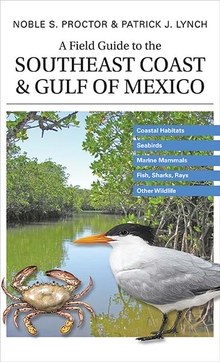Web Style Guide, 4th Edition
WARNING
You are viewing an older version of the Yalebooks website. Please visit out new website with more updated information and a better user experience: https://www.yalebooks.com
Foundations of User Experience Design
Fourth Edition
Patrick J. Lynch and Sarah Horton; Foreword by Ethan Marcotte
A classic reference book on user interface design and graphic design for web sites, updated to reflect a rapidly changing market
Consistently praised as the best volume on classic elements of web site design, Web Style Guide has sold many thousands of copies and has been published around the world. This new revised edition confirms Web Style Guide as the go-to authority in a rapidly changing market. As web designers move from building sites from scratch to using content management and aggregation tools, the book’s focus shifts away from code samples and toward best practices, especially those involving mobile experience, social media, and accessibility. An ideal reference for web site designers in corporations, government, nonprofit organizations, and academic institutions, the book explains established design principles and covers all aspects of web design—from planning to production to maintenance. The guide also shows how these principles apply in web design projects whose primary concerns are information design, interface design, and efficient search and navigation.
Consistently praised as the best volume on classic elements of web site design, Web Style Guide has sold many thousands of copies and has been published around the world. This new revised edition confirms Web Style Guide as the go-to authority in a rapidly changing market. As web designers move from building sites from scratch to using content management and aggregation tools, the book’s focus shifts away from code samples and toward best practices, especially those involving mobile experience, social media, and accessibility. An ideal reference for web site designers in corporations, government, nonprofit organizations, and academic institutions, the book explains established design principles and covers all aspects of web design—from planning to production to maintenance. The guide also shows how these principles apply in web design projects whose primary concerns are information design, interface design, and efficient search and navigation.
Patrick J. Lynch is senior digital officer in Yale University’s Office of Public Affairs and Communications. He lives in North Haven, CT. Sarah Horton is user experience strategy lead for the Paciello Group. She lives in New York City.
“An excellent primer for anyone working on the web. Horton and Lynch combine tried-and-true techniques with realistic examples to bring us a thorough, practical guide to today’s complex web projects.”—Sara Wachter-Boettcher, author of Design for Real Life and Content Everywhere
“The Web Style Guide is an invaluable overview of the myriad moving parts of a web project and does an excellent job demonstrating how they fit together; it’s a must-read for anyone involved in building for the Web.”—Aaron Gustafson, author of Adaptive Web Design
“With this new edition, the authors update the book to include important changes in the field of web building. This book will appeal to the professional web builder, the instructor, the scholar, and, of course, the student.”—Greg O’Toole, author of Sustainable Web Ecosystem Design
“This isn’t a book you’re reading. It’s a map. . . . Web Style Guide will provide you with path through your next project, and introduce you to ideas, concepts, and landmarks you’ll want to revisit.”—From the Foreword by Ethan Marcotte
“A practical handbook on managing complexity and depth in modern web design. With an emphasis on plastic, responsive content, it’s a great foundation to creating adventurous and usable digital experiences.”—Senongo Akpem, Constructive
“Very sound scholarship. Getting all this information in one place is significant.”—Phillip Simon, Quinnipiac University
“An outstanding resource for understanding how to design usable and effective websites.”—Michael C. Zalot, DeVry University
ISBN: 9780300211658
Publication Date: August 23, 2016
Publication Date: August 23, 2016
408 pages, 7 x 9
215 color illus.
215 color illus.














